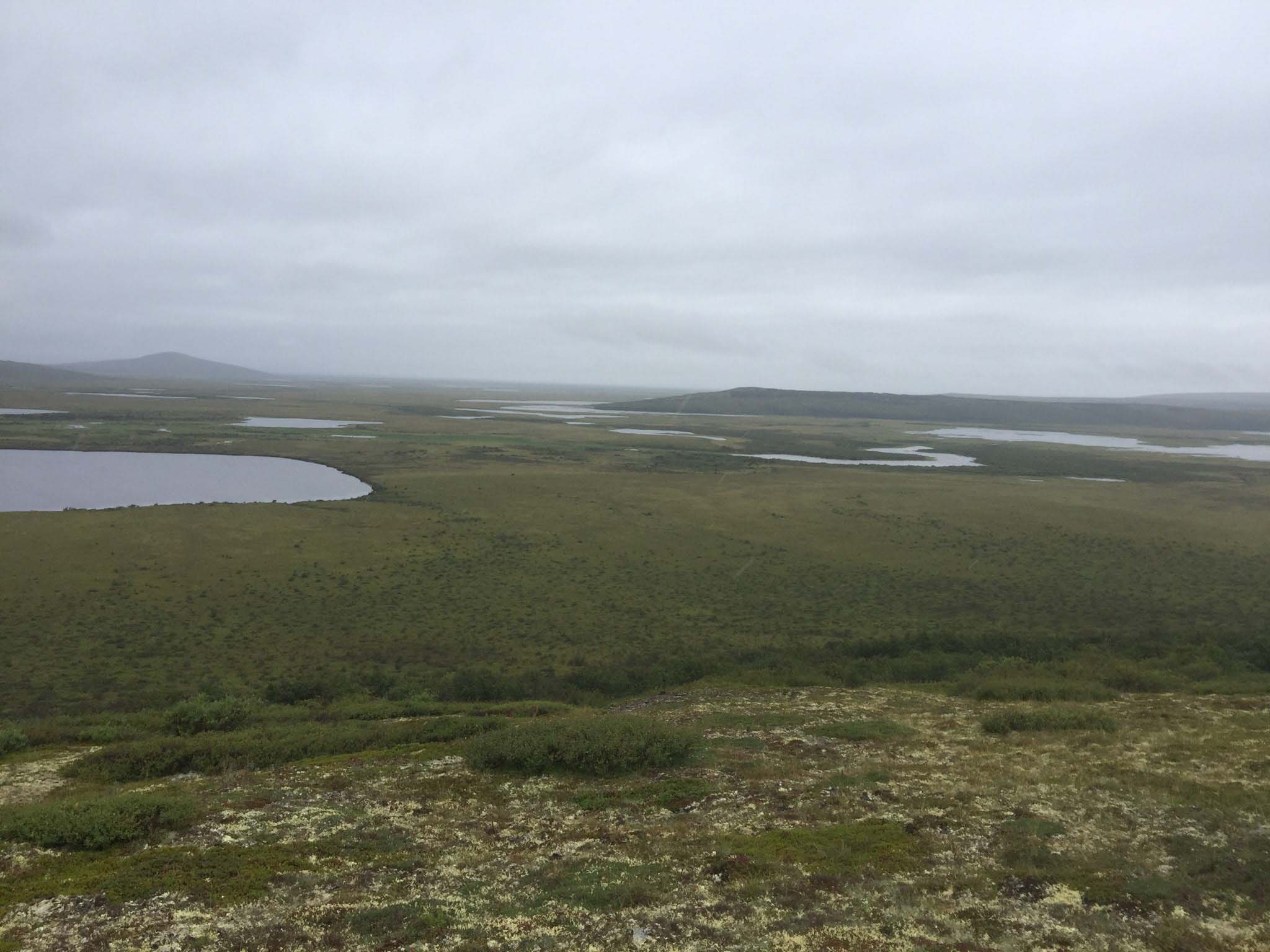May 19, 2022
Where, When and Why: Investigating Nitrate Availability across a Warming Permafrost Landscape
Nitrate levels in arctic soils are influenced by vegetation, topography, and rain events.

Alder shrublands growing along the Kougarok Hillslope, Seward Peninsula, AK.
[Courtesy Carli Arendt]
The Science
The team collected soil porewater from an Alaskan hillslope that is experiencing rapid warming and expansion of a nitrogen-fixing shrub, Alnus viridis spp. fruticosa (alder). Analysis revealed that porewater had the highest levels of nitrate underneath alder shrublands and that this nitrate was flushed downslope following rain events.
The Impact
The location and timing of nitrate availability is important because permafrost soils are typically poor in nutrients, especially nitrogen. As arctic ecosystems continue to warm, expansion of alder shrubs across hillslopes will impact the location and timing of nutrient availability for neighboring plants and soil microbial communities. This study presents the first comprehensive characterization of nitrate in soil water collected in and around alders growing in permafrost soils.
Summary
In Arctic ecosystems, warming is driving the expansion of shrubs across tundra landscapes. The proliferation of shrubs can change local soil chemistry, especially if the shrub species is capable of fixing “unavailable” nitrogen from the atmosphere into a biologically available form that plants can use. The team investigated nitrate in soil porewater at locations upslope, within, and downslope of shrublands dominated by nitrogen-fixing alder (Alnus viridis spp. fruticosa). Samples were collected during three field campaigns under a variety of weather conditions. Soil pore water from underneath alder shrublands had significantly higher levels of nitrate (4.27±8.02 mg N L-1) compared to areas outside the shrubland (0.23±0.83 mg N L-1; p<0.05). After rain events, elevated nitrate levels were found in samples from tussock tundra located downslope from alder shrublands, indicating that nitrate had been flushed downhill. Since alder shrublands have been expanding at this hillslope site since the 1950’s, these findings highlight how changing climate and vegetation together can alter the spatial and temporal patterns of nitrogen availability across an otherwise infertile arctic landscape.
Principal Investigator
Carli Arendt
North Carolina State University
[email protected]
Co-Principal Investigator
Brent Newman
Los Alamos National Laboratory
[email protected]
Program Manager
Daniel Stover
U.S. Department of Energy, Biological and Environmental Research (SC-33)
Environmental System Science
[email protected]
Funding
This research was part of the Next Generation Ecosystem Experiments (NGEE)–Arctic, which is supported by the Biological and Environmental Research (BER) Program within the Department of Energy’s (DOE) Office of Science. The Oak Ridge National Laboratory (ORNL) Contract for NGEE Arctic is No.DE-AC05-00OR22725 to UT-Battelle, LLC.
References
McCaully, R.E., et al. "High Nitrate Variability on an Alaskan Permafrost Hillslope Dominated by Alder Shrubs." The Cryosphere 16 (5), 1889–1901 (2022). https://doi.org/10.5194/tc-16-1889-2022.

